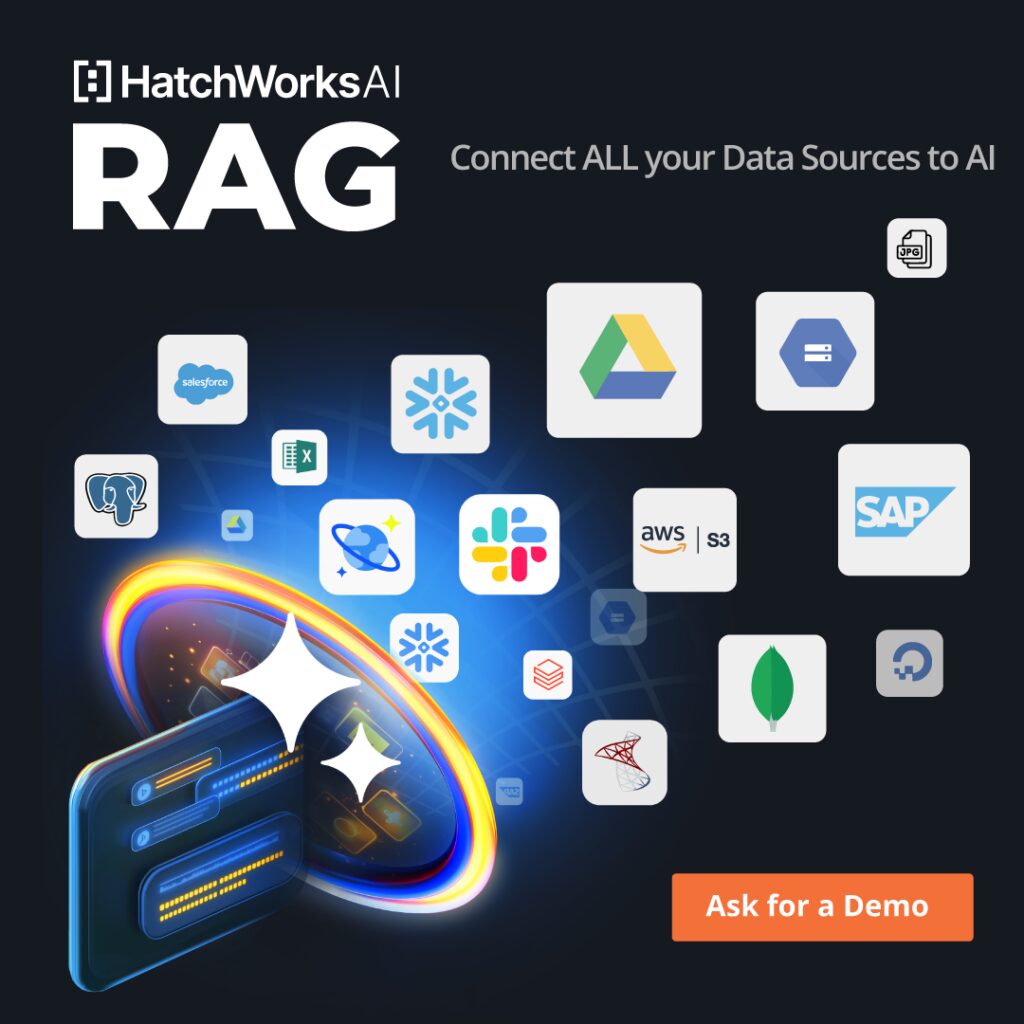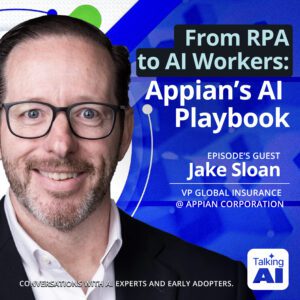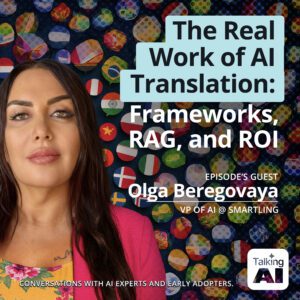Every day, your communication-based teams manage endless customer inquiries, trying to keep your messaging consistent across platforms, and racing to create responses that feel personal and relevant.
The volume and speed associated with the role however can cause chaos and frustrated customers.
Generative AI has helped, but it often misses key context, pulls from outdated data, or delivers responses that lack the human touch your audience expects.
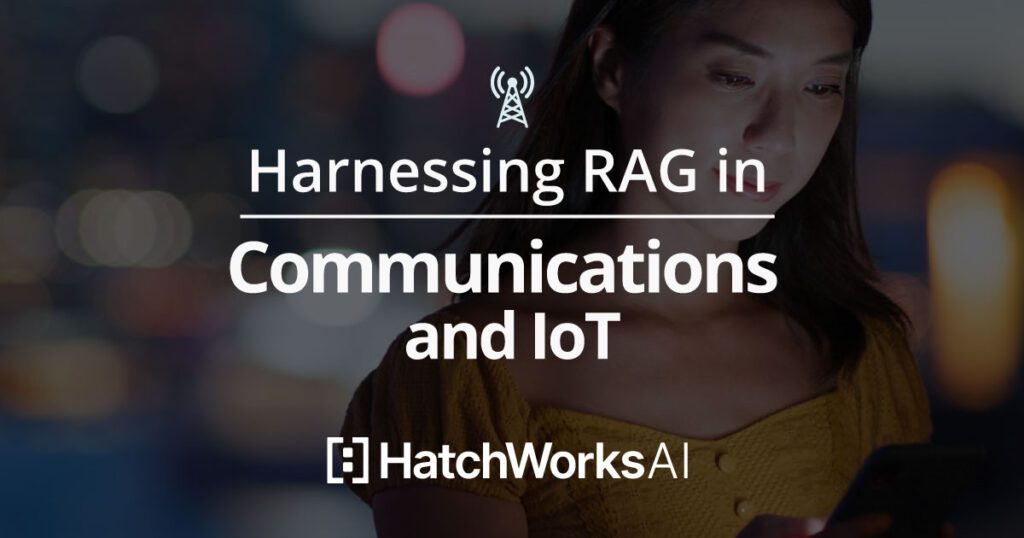
In this article, we’ll explore how RAG can make comms with your customers and your people more accurate, relevant, and reliant on your proprietary data.
Want to implement RAG right away?
Check out our RAG Accelerator here to learn how we can help.
RAG (Retrieval Augmented Generation) for Communications: How Do They Fit Together?
RAG merges retrieval-based AI models with generative ones.
Imagine you’re asking a question to a chatbot or virtual assistant. Most AI models (like an LLM) rely only on what they’ve been trained on, meaning they might give generic or outdated answers. But with RAG, the AI first searches for the latest, most relevant information from a huge database (like a search engine for specialized knowledge).
Once it has the most accurate details, it uses that data to generate a custom response that’s specific to your question.
In the image below, you can see how it all works together:
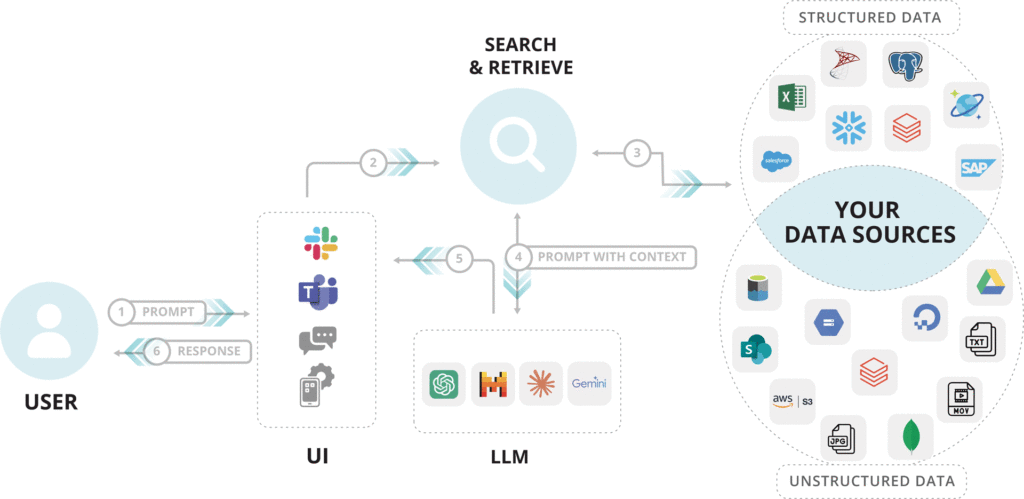
In communications, RAG can be used to pull information from customer databases, product manuals, and FAQs to create personalized, real-time responses.
Essentially, it’s an AI-powered assistant that understands the context of a customer inquiry and instantly pulls from relevant resources to provide accurate, tailored answers.
RAG vs. Other Technologies
Generative-only systems or rule-based chatbots, have fallen short in delivering the specificity and personalization needed in communications. For example, a Canadian airline provided incorrect information through an AI chatbot—information that led to them losing an expensive lawsuit.
Here’s how RAG stands apart from such chatbots and other static tools:
RAG vs. Chatbots: Generative models, such as standard LLMs, generate outputs based on the patterns they’ve learned from past data.
They can produce coherent responses, but they might not always be accurate or relevant, especially in dynamic communication scenarios.
RAG makes it so that every output is informed by the most up-to-date information, retrieved from internal proprietary sources like customer profiles, interaction histories, and external databases.
RAG vs. Static Content Generation Tools: Rule-based systems rely on predefined responses and are limited by the data they’ve been programmed to access.
This makes them rigid and unable to adapt to new scenarios or customer-specific needs.
RAG, however, adapts in real-time by pulling relevant information from both internal and external databases, generating context-specific, personalized responses that rule-based systems can’t match.
RAG goes beyond static responses by using proprietary and real-time data sources to provide communication that is more personalized and accurate.
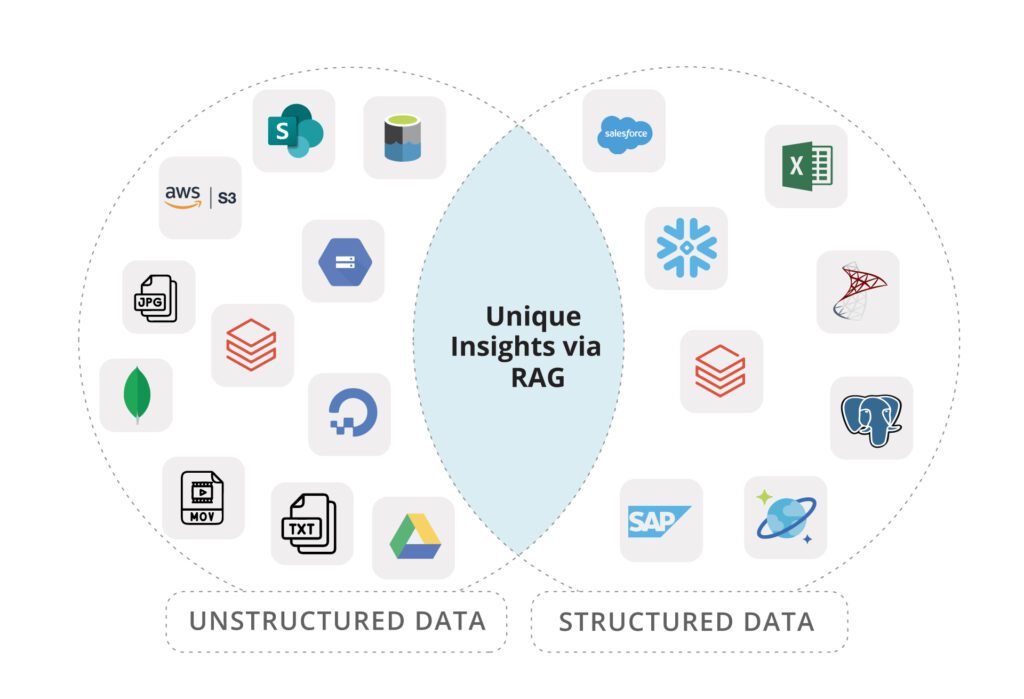
Here’s how you can leverage it:
- Personalization: It enables more tailored communication by pulling from specific customer data and recent interactions.
- Competitive advantage: Your communications can stand out by providing unique, data-driven responses that are based on your proprietary assets.
- Data security: With access controls in place, sensitive customer data stays secure while still being utilized to improve communication quality.
- Continuous improvement: As more data is gathered, the system refines and improves its responses, learning from every interaction.
RAG also helps reduce hallucinations and inaccuracies, a common problem with generative AI models, by grounding its outputs in real, reliable data from your own databases.
Why Communications Needs RAG: A Summary
Every interaction with a customer can make or break trust. Inaccurate or slow responses can lead to frustration, loss of business, or even data breaches.
Using RAG in communications allows you to keep sensitive customer data secure while providing responses that feel more natural and human-like.
By merging generative AI with real-time data retrieval, your communication systems can pull relevant details from the right sources, helping your team respond faster and with more accuracy.
Secure and Certified with SOC 2 Type I and HIPAA
 At HatchWorks, trust and compliance are paramount. We adhere to the highest security standards, evidenced by our SOC 2 Type I and HIPAA certifications.
At HatchWorks, trust and compliance are paramount. We adhere to the highest security standards, evidenced by our SOC 2 Type I and HIPAA certifications.
These certifications, verified through independent audits, ensure our systems are secure and your data is protected under strict privacy regulations. Stay informed with our real-time TrustCloud compliance program.
Benefits of RAG in the Comms Sector
Let’s look more closely at how RAG can benefit your communications efforts.
You can:
- have more personalized
- customer experiences.
- improve internal
- comms and knowledge sharing.
- become a more efficient operation by reducing the time you spend searching for accurate information.
Personalized Customer Experiences (That Feel Human)
When a customer gets in touch, you want their experience to feel human whether they’re speaking to one or not. And that requires personalization and accuracy.
RAG delivers hyper-personalized responses by pulling in real-time data from customer profiles, past interactions, and behavioral history.
Every interaction feels more relevant, making communications with customers more engaging and authentic. This works across platforms—email, live chat, voice messages, and more.
Just picture your customer service team responding to a query by pulling recent order details, past service history, and relevant product updates at once. Or an AI agent that can do the same.
With RAG, you can resolve issues faster and deliver a more personalized experience for the customer. Everyone wins!
Improving Internal Communications and Knowledge Sharing
Poor internal communication and knowledge silos slow teams down. RAG can be used to boost internal collaboration by making it possible to quickly retrieve important information like emails and project updates.
Teams then spend less time searching for information and more time making decisions with the data they need at their fingertips.
A project team working on a tight deadline can access the latest documents and email threads related to their work, which helps them keep projects moving forward efficiently.
Reducing the Time Spent Searching for Information (Customers & Employees)
Both employees and customers can benefit from faster, easier access to information.
Employees often spend too much time searching through various systems and databases to find what they need. But RAG will reduce the time they spend looking for information from internal databases. Productivity will increase and workflows actually…flow.
How RAG Can Be Used in Communications: Key Applications & Use Cases
The benefits we listed translate easily into use cases. We’ll look specifically at how RAG helps Customer Support teams, how it assists in content creation for PR and Marketing, and how it enhances Sales Enablement.
Customer Support
Imagine you’re a customer support agent working with a customer who’s run into an issue with their product.
Without RAG, you’d probably need to dig through manuals, check their purchase history, or consult troubleshooting guides—time-consuming steps that keep your customer waiting.
With RAG, however, all that information is at your fingertips. You get instant access to product manuals, customer history, and relevant troubleshooting guides.
This means you can respond faster, with answers that are tailored to their specific situation.
Content Creation for PR and Marketing
Personalization keeps audiences engaged and boosts revenue for the brands who use it—with some studies reporting up to 300% in increased ROI.
RAG makes personalization easier.
Marketing teams can use RAG to create customized content for each audience segment by pulling data like browsing history, purchase habits, and market trends in real-time.
Picture this: instead of sending out a generic newsletter, RAG helps your team develop targeted emails that highlight products aligned with each customer’s recent purchases or preferences.
This kind of thoughtful, data-driven communication deepens engagement and increases conversions by showing customers exactly what’s relevant to them.
Sales Enablement and Client Communications
Sales teams thrive on information, and the more personalized, the better.
RAG allows your reps to access recent customer interactions, relevant sales collateral, and the latest market trends, making it easier to tailor pitches and proposals. Imagine you’re a rep preparing for a high-stakes pitch.
With RAG, you can pull in data on the client’s recent activity, their industry’s latest trends, and even similar case studies.
This turns a standard pitch into a highly personalized, data-backed conversation that resonates with the client’s current needs.
Overcoming Challenges
If you implement RAG to help with communications in your business you’ll see benefits almost immediately. But that doesn’t mean you shouldn’t be prepared to circumvent some challenges along the way.
Here, we’ll look at how to address concerns around data privacy, accuracy, and scalability.
Challenge 1: Handling data privacy and security
Using proprietary or sensitive data with RAG models can raise legitimate privacy concerns. Customers expect their data to be handled responsibly, and companies need to keep proprietary information secure. To protect data, consider encryption practices and secure access controls that restrict data use to authorized users only.
Implementing strong data governance policies also helps maintain control over who accesses what data, creating an extra layer of trust with customers.
It’s also wise to work with IT and legal teams to develop privacy-compliant practices tailored to your industry’s standards, so RAG implementation aligns seamlessly with any existing security frameworks.
Challenge 2: Ensuring accurate data retrieval and avoiding outdated information
For RAG to work effectively, data accuracy is critical—outdated or incorrect data can lead to misinformation and reduce the model’s credibility. This means regularly updating data sources, integrating real-time data feeds where possible, and auditing sources to weed out inaccuracies.
To ensure RAG models are always pulling reliable data, consider building automated checks that verify data accuracy before retrieval.
Establishing a process for routine data updates and flagging older information as archived or less relevant can also improve the quality of information delivered to both customers and internal teams. By setting these practices, your RAG system will stay accurate and dependable over time.
Challenge 3: Scaling RAG across large organizations
Rolling out RAG to large teams—whether they’re spread across regions or departments—can feel overwhelming.
The best approach is to start with a pilot program in one department (like customer service or a regional office) to identify any integration pain points. This small-scale implementation can reveal areas for improvement before a full-scale deployment.
Once you have a solid foundation, you can gradually expand RAG across teams, adapting the model to specific departmental needs.
Consider providing training sessions to help teams make the most of RAG’s capabilities, and set up feedback loops to ensure the system continues to meet each team’s unique requirements.
This method makes scaling manageable, and it helps teams adapt to RAG at a pace that works for everyone.
What Will Your RAG Use-Case Be?
Identify where RAG could transform your communications.
Here’s how to get started:
- Map Out Key Areas: Look at high-impact areas like customer support, PR, and sales where timely, personalized information makes a difference.
- Leverage Proprietary Data: Think of specific data (e.g., customer history, product guides) that could elevate your communications and increase relevance.
- Engage Stakeholders: Work with customer service, marketing, and sales teams to validate ideas and ensure alignment.
If comms in your business are ripe for retrieval augmented generation, start by asking, “Where could smarter, context-aware, proprietary data-based responses add the most value?”
If elevating customer experience is a goal, RAG could support your team by delivering tailored responses that draw on the customer’s recent interactions and preferences, all within moments.
For example, a service representative handling a complex inquiry could access detailed product guides, previous service notes, and recent troubleshooting steps instantly. This creates a seamless, personalized experience without keeping customers waiting.
Or, if maintaining unified messaging is a priority, RAG could empower PR and marketing teams by providing instant access to the latest brand guidelines, recent press mentions, and industry trends.
This way, your teams can confidently create communications that resonate and stay true to your brand’s voice, no matter the platform or audience.
The Road Ahead: RAG’s Future in Communications
The next frontier for RAG? Multimodal interactions—using voice and video to provide even richer, more engaging customer experiences.
Imagine a customer support call where RAG isn’t just processing text but analyzing the customer’s tone, visual cues, and even their environment, pulling insights to offer instant, empathetic solutions. This type of context-aware interaction could mean shorter wait times, faster resolutions, and customers who feel truly understood.
RAG with voice and video opens up possibilities for real-time sentiment analysis—tailoring responses or content on the spot based on facial expressions or voice inflections.
With advances in AI, RAG systems will become more responsive and able to learn and adapt to customer behavior and preferences across mediums. It’s not just about automating responses—it’s about creating communications that feel alive, understanding, and precisely tuned to each individual’s needs.
Introducing the RAG Accelerator: HatchWorks AI’s Solution to Your RAG Needs
Excited to work RAG into your AI adoption but overwhelmed at the prospect? We get it. It can be complex, time-consuming, and resource-intensive—especially if you don’t know what you’re doing.
That’s why we created the RAG Accelerator. It’s a done-for-you implementation of RAG, allowing you to harness the power of your data without the headaches of development and integration.
HatchWorks AI’s RAG Accelerator offers:
- Customized RAG solutions built around your unique data and needs
- Seamless integration with your existing systems and workflows
- Ongoing support and updates to ensure your RAG system stays cutting-edge
- Full data security and privacy compliance, keeping your sensitive information safe
Visit our service page to learn more about how we can tailor a RAG solution for your organization, or contact us directly to schedule a consultation.
Other AI resources you might like:
- How to Deploy an LLM: More Control, Better Outputs
- How AI as an Operating System is Shaping Our Digital Future
- Embrace Generative AI in 2024: A Detailed Guide for Seamless Team Integration
- RAG: What YOU Need to Know to Apply AI at Work
- The CTO’s Blueprint to Retrieval Augmented Generation (RAG)
- RAG in Financial Services: Use-Cases, Impact, & Solutions
- Harnessing RAG in Healthcare: Use-Cases, Impact, & Solutions
- RAG for Retail: Use-Cases, Impact, & Solutions
- RAG for Technology: Use-Cases, Impact, & Solutions
Turn Your Data Into a Differentiator
Access the power of AI in your enterprise with our RAG Accelerator.
